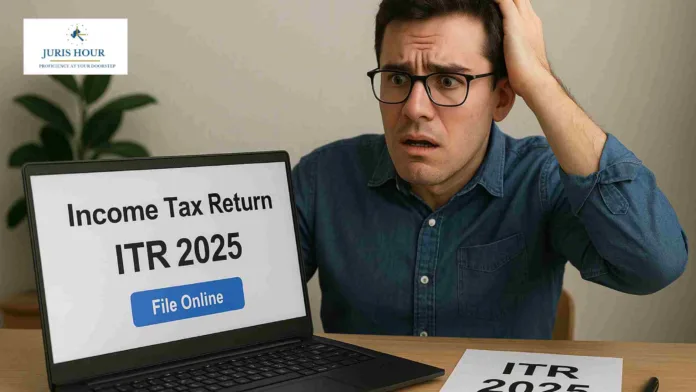With the July 31 deadline for filing Income Tax Returns (ITR) fast approaching, millions of taxpayers in India are turning to online portals and government websites to file their returns themselves. While this do-it-yourself (DIY) approach is quicker and more cost-effective, skipping professional help can lead to costly errors, especially under the updated Income Tax Return Forms for Assessment Year (AY) 2025–26.
Whether you are a salaried employee, freelancer, or running a small business, here are 5 common mistakes people make while filing ITR without the assistance of a Chartered Accountant (CA)—and how you can avoid them.
1. Using the Wrong ITR Form
The Income Tax Department introduced revised ITR forms for AY 2025–26, merging ITR-2 and ITR-3 in some cases and streamlining disclosures for crypto, foreign assets, and capital gains. However, many taxpayers still select the wrong form based on outdated assumptions.
Example: A salaried person with capital gains from mutual funds must use ITR-2, not ITR-1 (Sahaj).
Impact: Using the incorrect form can lead to defective return notices under Section 139(9) and may even nullify the filing.
Tip: Refer to the official ITR Form Selection Tool or consult a CA if you have multiple income sources.
2. Forgetting to Report All Income Sources
People often report only salary income, overlooking:
Interest from savings and fixed deposits (FDs)
Freelance or side-gig earnings
Dividends or capital gains
Crypto and NFT transactions (mandatory in ITR-2 and ITR-3)
Why it matters: The tax department now pre-fills your AIS (Annual Information Statement) with data from banks, mutual funds, and brokerages. If you skip these, it creates mismatches and increases your risk of getting flagged for scrutiny.
Tip: Always cross-check your AIS and TIS on the income tax portal before filing.
3. Not Claiming Deductions or Declaring Exempt Incomes Properly
Filing ITR yourself means you’re also responsible for claiming eligible deductions under:
Section 80C (PF, LIC, ELSS)
80D (health insurance)
80E/80G (education loans, donations)
Section 10 exemptions (HRA, LTA, agricultural income, etc.)
DIY filers often:
Forget to declare exempt incomes like PPF interest
Miss newly added fields such as deductions for electric vehicle loan (80EEB)
Tip: Use a checklist of deductions and verify the pre-filled data. CAs typically optimize tax planning—without them, ensure you’re not under-claiming.
4. Errors in Carry Forward of Losses
If you have losses from business income, house property, or capital markets:
These must be declared and carried forward using the correct ITR form and within the due date (i.e., July 31).
Losses filed after this deadline cannot be carried forward, even if you file a belated return later.
Tip: File within the due date and don’t overlook schedule CFL (Carry Forward of Losses).
5. Bank Account & Verification Oversights
One of the most common mistakes is:
Not verifying the ITR after submission via Aadhaar OTP, EVC, or physical form
Not linking the correct bank account for refunds
Choosing a non-primary or inactive bank account
Impact: If the return is not verified within 30 days, it is considered invalid. Also, tax refunds may get stuck or misrouted.
Tip: Use Aadhaar-linked mobile for OTP and validate your bank details under the ‘Profile’ section before filing.
Final Thoughts: DIY Is Doable, But Be Diligent
India’s tax ecosystem has certainly evolved with tools like e-Filing 2.0, pre-filled forms, and AIS/TIS reports. While filing ITR without a CA is feasible, it demands greater attention to compliance and a thorough understanding of the current tax laws.
If your finances are complex—stock trading, crypto, rental income, or business turnover—it’s still safer to consult a professional.

